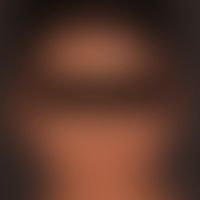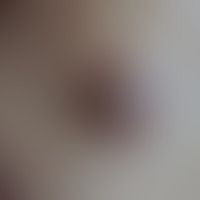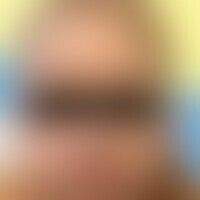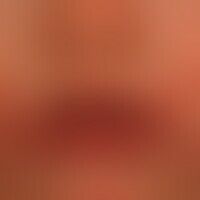Image diagnoses for "Face"
340 results with 978 images
Results forFace
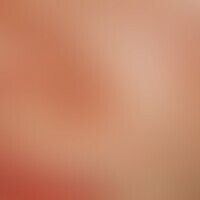
Multiple Trichoepithelioma D23.-
Trichoepitheliomas: bulging elastic skin-coloured nodules and nodules in the nasolabial fold; multiple, rough, hemispherical, 0.2-0.5 cm large, partly glassy, skin-coloured or red, symmetrically arranged nodules
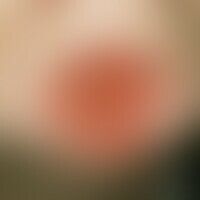
Cutaneous t-cell lymphomas C84.8
Primary cutaneous anaplastic large cell (CD 30+) lymphoma. Painless, slowly progressive skin ulcer (62-year-old, otherwise healthy woman) which has been present for several months and treated as "pyoderma". Conspicuously raised wall of the ulcer and distinct induration of the reddened edges.
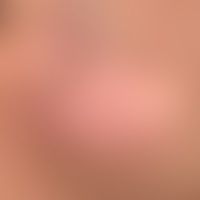
Lupus erythematodes chronicus discoides L93.0
Lupus erythematodes chronicus discoides: CDLE leading to significant scarring. atrophy of the skin, easily recognizable by the hair loss. in the cheek area extensive, in places deeply sunken (atrophy of the subcutaneous fatty tissue) scar with low inflammatory activity.

Herpes simplex disseminatus B00.7
Herpes simplex disseminatus: extensive herpes simplex infection of the perioral region. massive bacterial superinfection. painful bds. lymphadenitis. note the grouped vesicles of herpes simplex infection (circled).
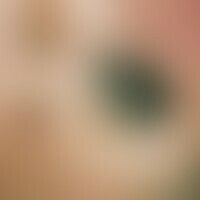
Lentigo maligna D03.-
Lentigo maligna: multiple, chronically stationary, since more than 5 years existing, imperceptibly growing, irregularly limited, black-brownish, 0.3-2.0 cm large pigment spots on the right cheek of a 69-year-old man.
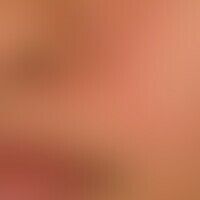
Seborrheic dermatitis of adults L21.9
Dermatitis, seborrheic: Blurred, delicately reddened, coarse lamellar scaling, flat, slightly infiltrated plaques in a 24-year-old female patient.
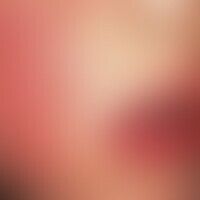
Erythema perstans faciei L53.83
Erythema perstans faciei. persistent, butterfly-shaped, livid red erythema in a 3-year-old boy with vitium cordis (pulmonary stenosis, subaortic stenosis, vascular transport and ventricular septal defect).
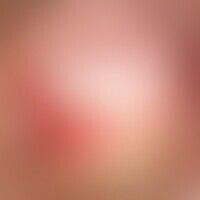
Ain D48.5

Psoriasis seborrhoic type L40.8
Psoriasis seborrhoeic type: Chronic recurrent, sharply defined, flat, rough, partly with yellowish scaling, bordering, red spots and plaques.
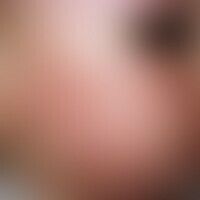
Acne infantum L70.40
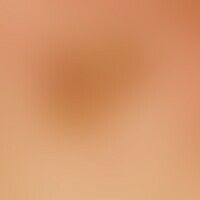
Lentigo solaris L81.4

Tuberculosis cutis luposa A18.4
Tuberculosis cutis luposa: The 32-year-old Syrian has an irregularly limited, symptom-free, skin-coloured, sunken scar with marginal aggregated, painless, verrucous, brown plaques.
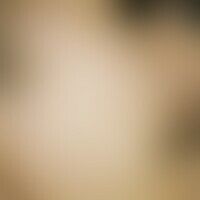
Argyria L81.8
Argyrie: diffuse gray coloration of the facial skin after multiple roll cures due to ulcus ventriculi.

Nevus of Ota D22.30
Naevus fuscocoeruleus ophthalmomaxillaris. irregular, planar, brown to blackish blueish, half-sided pigmentation. half-sided manifestation running along the trigeminal nerve in the cheek area.

Actinic elastosis L57.4

Giant keratoakanthoma D23.-
Giant keratoakanthoma: 6 cm in diameter large, painless lump, which initially grew very quickly, but now for several months no detectable size growth.


